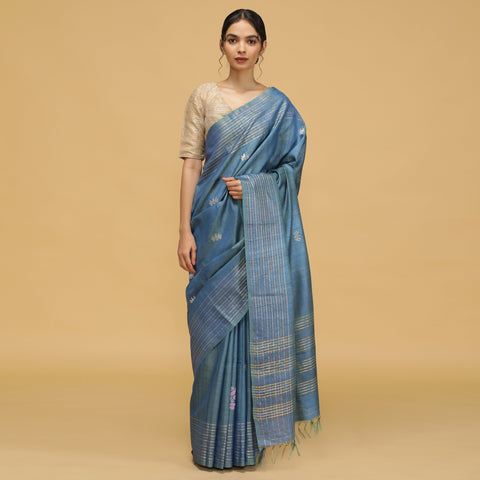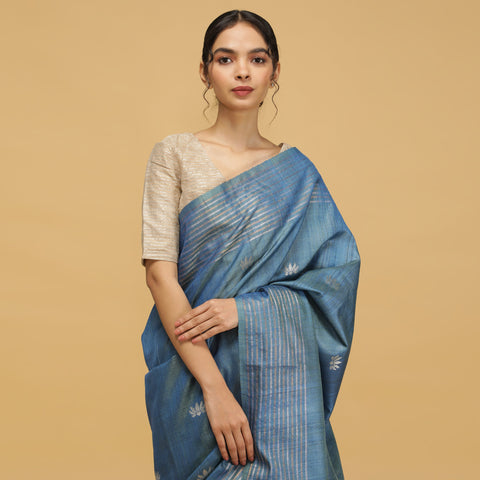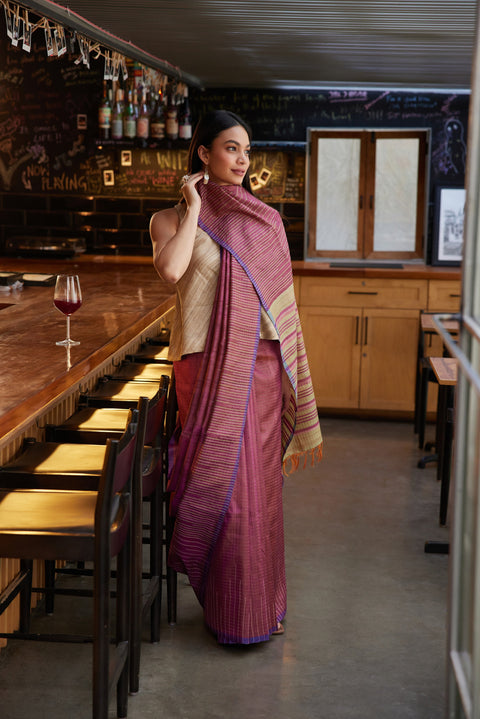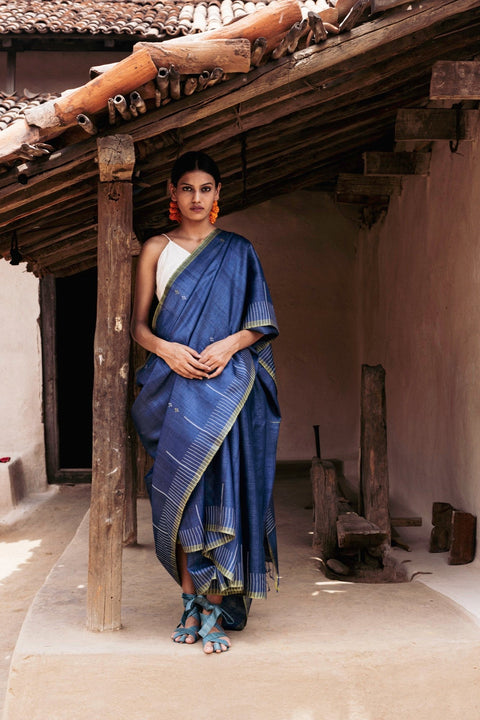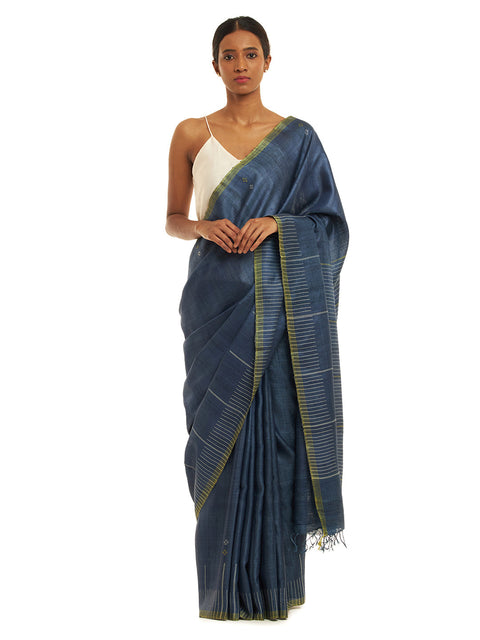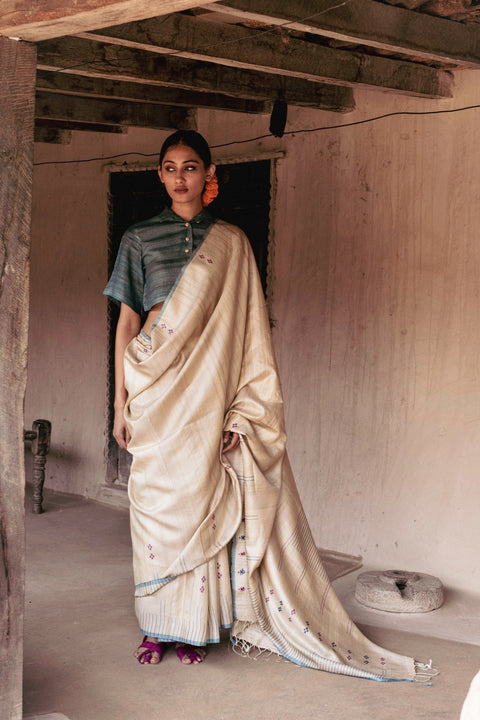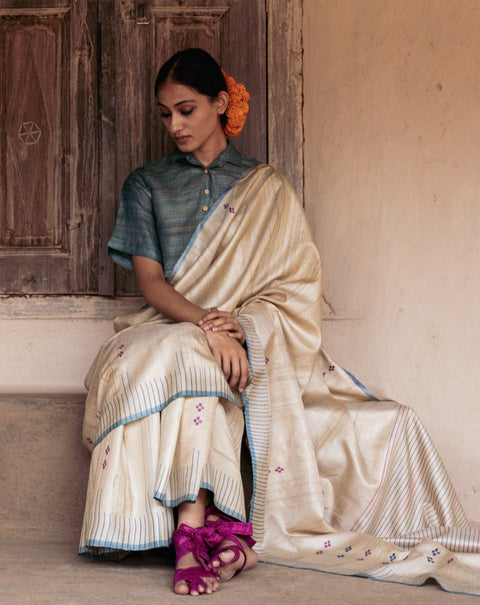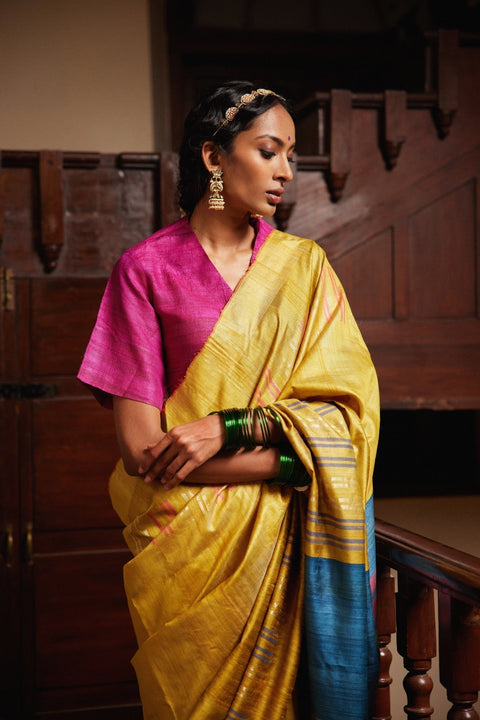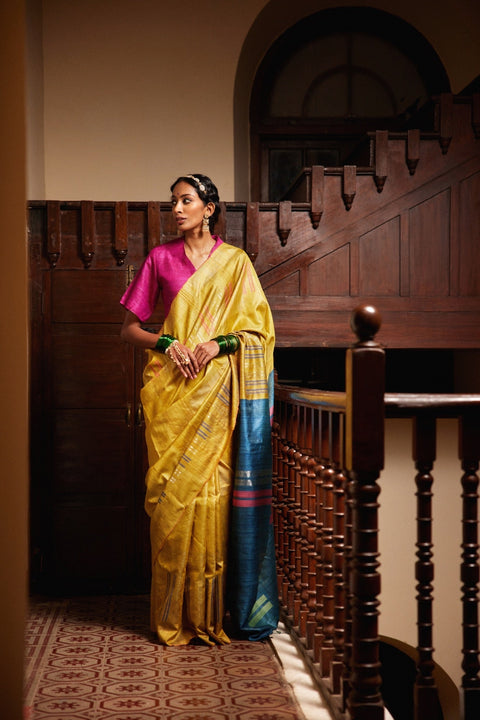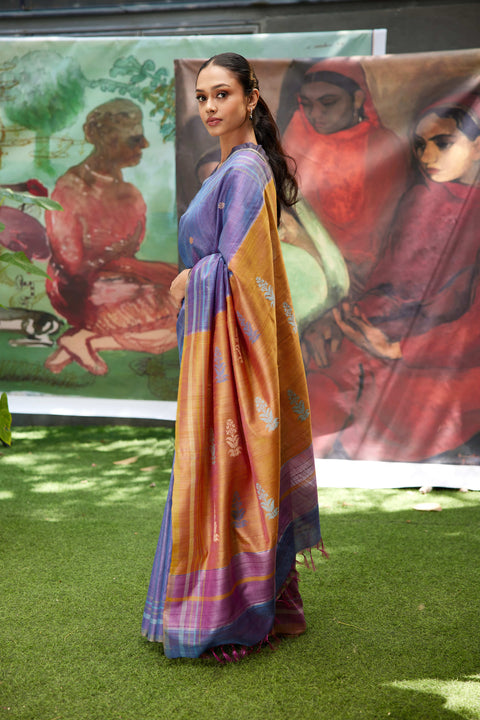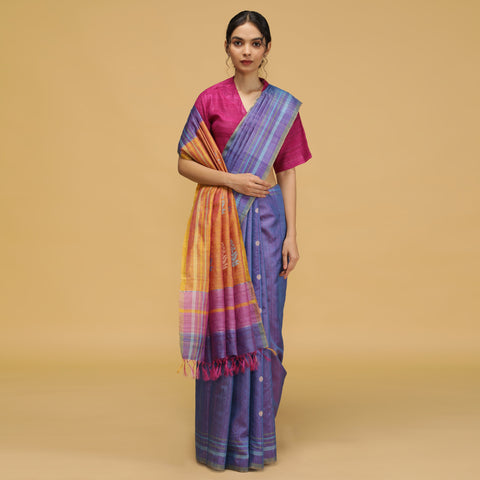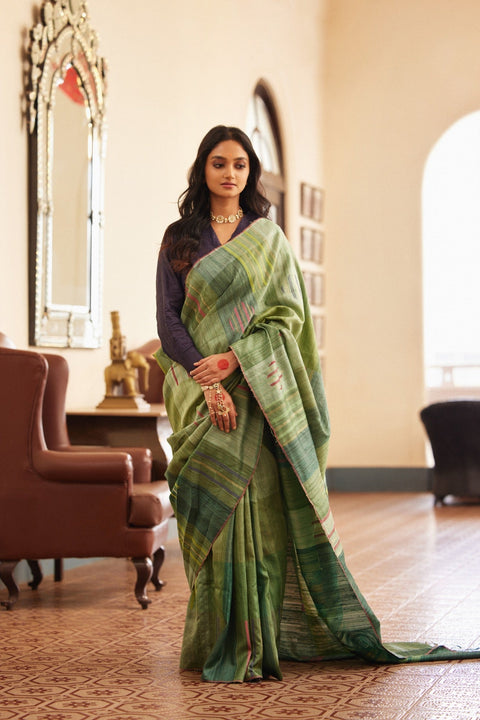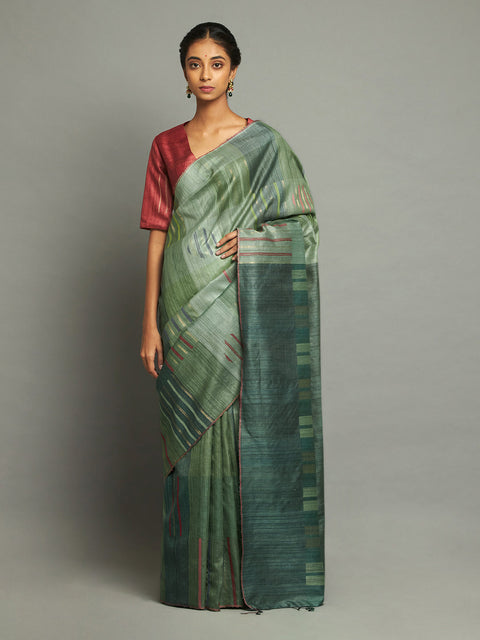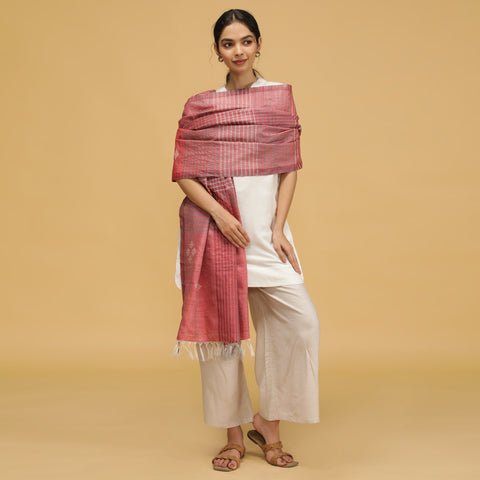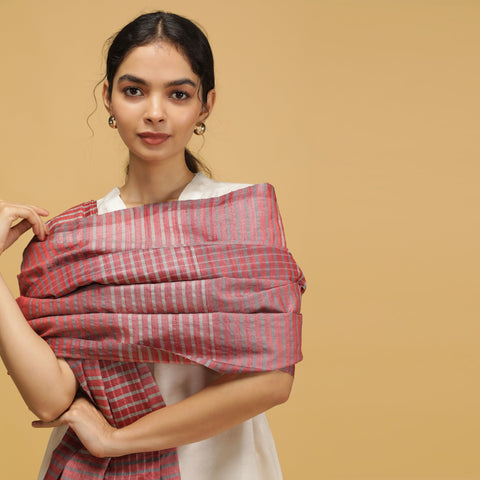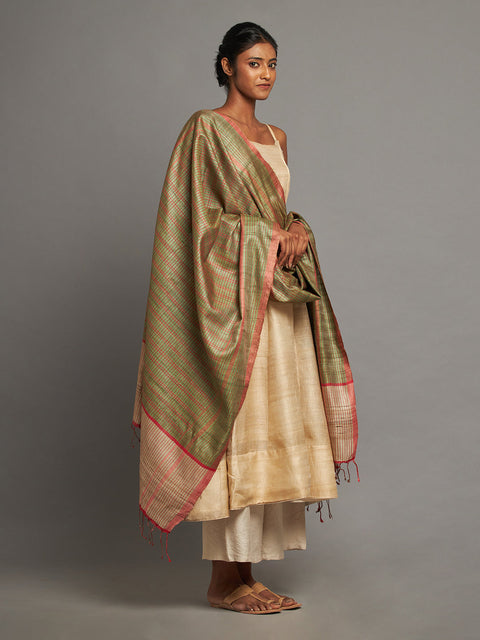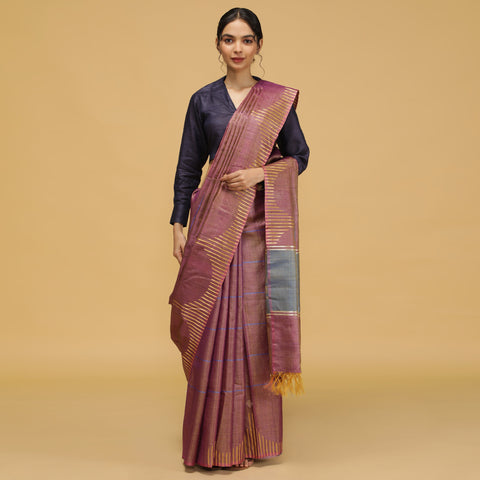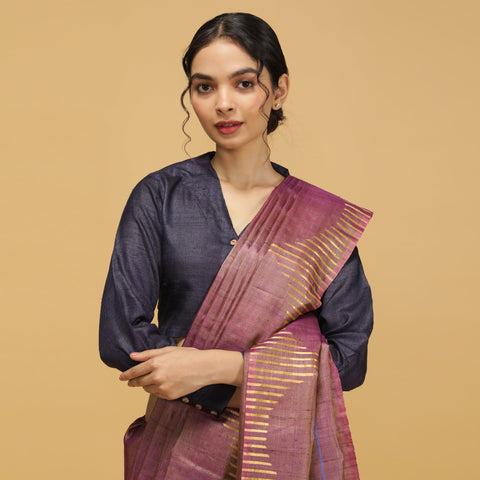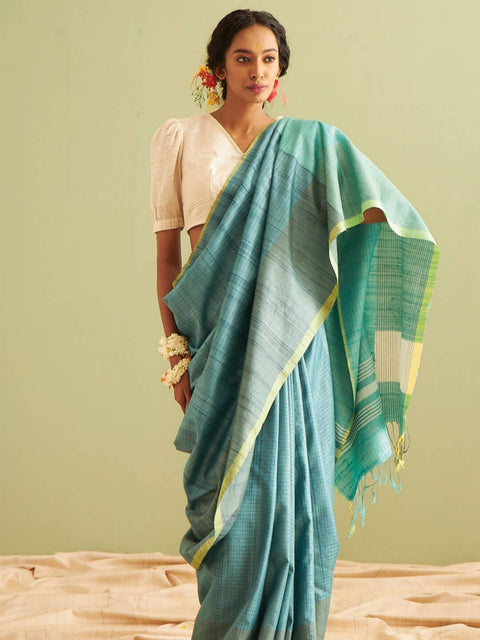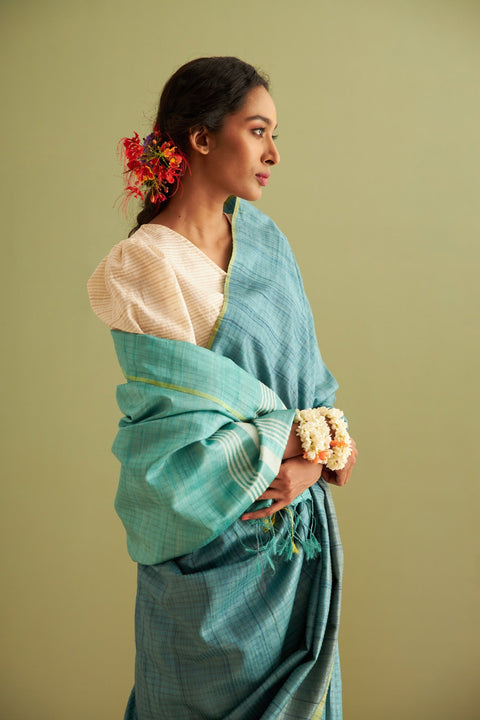
Table of Contents
India has a deep connection to silk. From the royal courts of ancient kingdoms centuries ago to the designer runways of today, silk has become synonymous with elegance, tradition and status. There are many varieties of silk such as Banarasi, Kanjeevaram, Tussar… some better than others, and, of course, there is Kosa, a lesser-known silk that comes from Central India, Kosa is positioned well within the Indian silk market. But does Kosa silk, this hidden gem of Central Indian culture and tradition, hold its ground against the more beloved silks of India?
Let's unwind this textile showdown.
What is Kosa Silk?
Kosa silk, proudly known as the pride of Chhattisgarh, is produced from the larvae of the tropical silkworm, Antheraea mylitta. It is a variety of Tussar and is particularly well-known for its sheen, breathability, and strength. Kosa silk, in contrast to mulberry silk, has a thicker texture, some golden nodes, and is slightly coarse. These fibres contribute to the earthy, elegant, and incredibly durable aesthetic.
Whether worn elegantly in the form of Kosa saree , or fashioned into a beautiful modern garment, Kosa silk will always have a unique feel where tradition meets rustic elegance. Among the variety of silk sarees available in India, Kosa stands out for its organic feel and cultural roots.
Kosa vs. Kanjeevaram: The Regal South vs. the Rustic Central
The Kanjeevaram silk from Tamilnadu has long been considered the queen of silks. Kanjeevaram silk is bright, precisely loom woven, with wide borders, large intricate zari, and is the cloth of every wedding, festival, and all grand occasions.
Practically anyone would be able to distinguish between these 2 silks just on sight. Nevertheless, they both retain their own individual charm.
Final Summary: Kanjeevaram wins on splendor, but Kosa silk sarees wins on comfort and understated elegance.
Kosa vs. Banarasi: Earthy Luxury vs. Ornate Glamour
Banarasi silk from Varanasi is known for its luxury value, brocade work and Mughal motifs. It is synonymous with extravagance and tradition.
As you can see in the table above, there is quite a stark difference between the two. However, they each radiate their own individuality.
Verdict: Banarasi is all about extravagance and show-stopping glamour, while Kosa sarees celebrate a more grounded elegance.
Kosa vs. Tussar: Cousins with Character
While Kosa is technically a kind of Tussar, when looked closely, there are countless differences that help distinguish the two. The following table highlights the key differences between these two sarees:
Verdict: Think of Kosa as Tussar’s hardier sibling - less polished, but more robust. Ideal for those seeking long-lasting handloom silk sarees that only get better with time.
Why is Kosa Silk still Undervalued?
While the more mainstream silks of India conjure flamboyance, the Kosa silk also brings authenticity. It is a fabric imbued with the story of indigenous weavers, cocoons from the forests of Central India, and ancient inherited customs. In addition, Kosa silk effortlessly evokes today's modern concepts, lending itself beautifully to natural dye, attracting many eco-focused designers.
As the demand for a diverse variety of silk sarees continues to grow, Kosa holds its own as an ethically made, culturally rich fabric choice for the conscious consumer.
How to Wear Kosa in Today's World
For Festive Wear: Pair a handwoven Kosa saree with antique silver jewellery and we get an old meets new scenario!
For Everyday Elegance: Kosa silk kurtas and dupattas’ breathability and style, makes it the perfect everyday wear.
For Sustainable fashion lovers: Kosa is a more natural low-impact silk with great longevity.
In a market overflowing with every variety of silk sarees, Kosa offers an earthy elegance and classic aesthetic that stands apart.
Final Thoughts
India has a great legacy with silk and provides a lovely bounty of silk varieties on the loom. Kosa silk sarees may not have the glamour of Banarasi, or the royalty of Kanjeevaram, but it has something more precious and unique, it is authentic, raw, and heartfelt. After all these years it's finally time to embrace Kosa silk into your closet and into India's fabric folklore.



